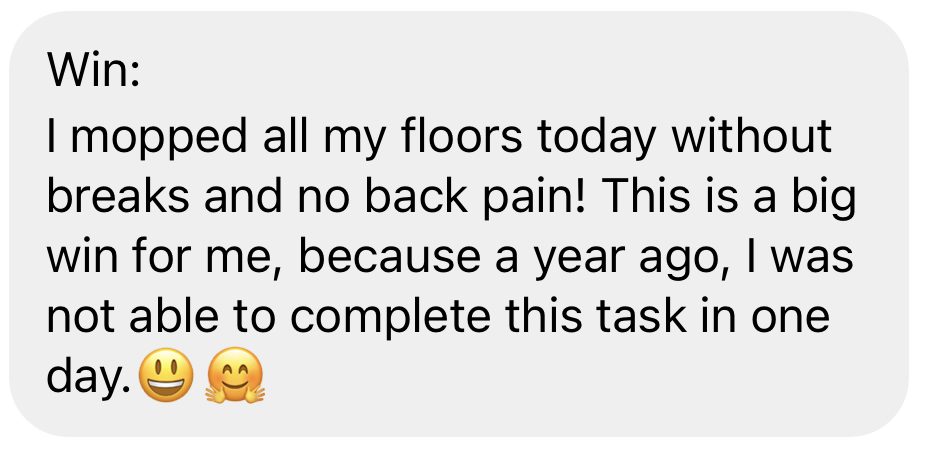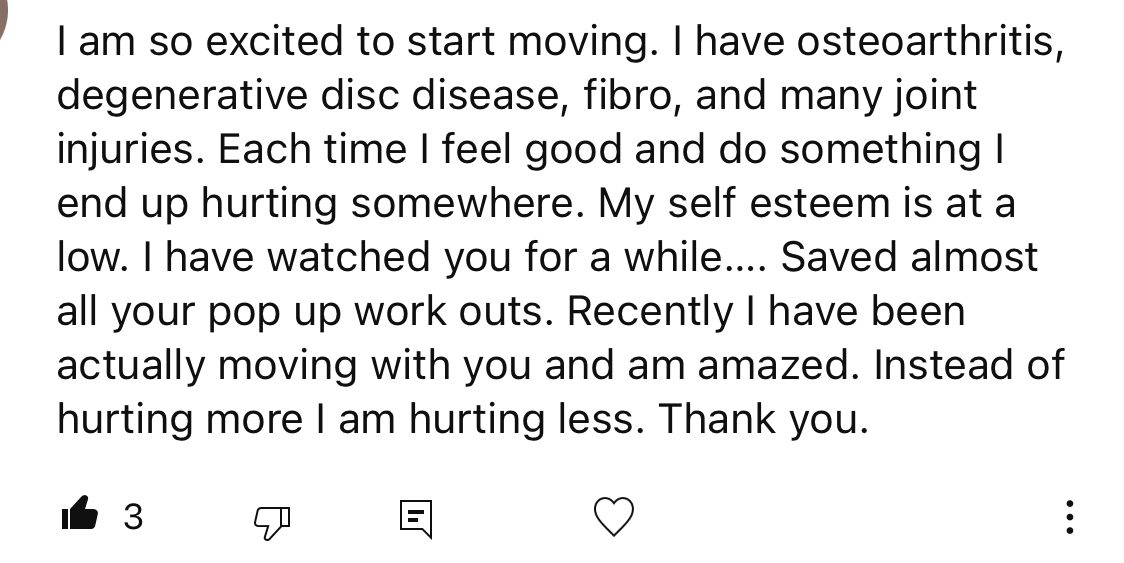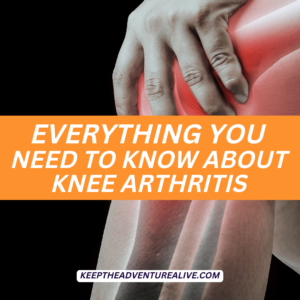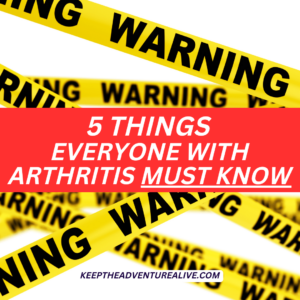In order to prevent degenerative disc disease from getting worse, you have to understand why you’re in pain, find movements your body likes again, and avoid giving up hope. Many times people are misled that surgery is the quick fix but, surprisingly the failed surgery rates are upwards of 50% for those with lower back degenerative disc disease. If you want to control your pain and keep your adventure alive with degenerative disc disease, it is important to avoid these 3 things below.
Degenerative disc disease is very common and can be debilitating if nothing is done to help the pain.
It can be scary to hear the diagnosis and see the x-rays.
You may be told that surgery is your only option. Fixing your spine so that you no longer have pain may sound appealing. But keep reading to hear the reality of some surgeries…
Why surgery isn't always the answer
I met a woman when I was working in a traditional physical therapy clinic a few years ago. She was an avid tennis player and golfer. She had started to develop back pain but just thought she would try to shake it off.
She stopped playing tennis and golf because the rotation made her back go into a spasm.
A month went by and her pain continued to get worse. She continued to spend more time resting and continued to decline. Her life became Advil and inactivity.
Finally after 12 months of this, she had to use a cane to walk around her home.
Finally after 18 months of chronic back pain, she couldn’t take it anymore.
She went to see her surgeon and had a spinal fusion done. She knew a long road to recovery was ahead but she really wanted to get back to activity.
After she had recovered, her surgeon told her at her appointment she will have a hard time playing both tennis and golf because her range of motion will likely be permanently limited from the fusion.
Unfortunately this is the typical road for a lot of people living with degenerative disc disease. Typically they aren’t aware that pain relief is possible outside of surgery. But here’s the problem…
"Many patients are mistakenly led to the belief that [degenerative disc disease] can be cured by surgery, sadly failed surgeries and residual neurological deficits are common"
(Donnally III et al. 2020)
It is important to understand that surgery does have a time and a place. But with degenerative disc disease, surgery is rarely warranted but many people think it is the only option.
I want you to know that you do have options.
How to thrive with degenerative disc disease
Brooke is one of my clients who had been dealing with back pain that limited her from enjoying time with her kids and began to interfere with day to day activities.
After a year of dealing with pain that didn’t seem to be getting better after doctor’s visits and chiropractors she wanted a different approach.
After following these principles below and working one on one with me, she was able to get back to hiking. Her son asked her if she would be alright hiking and this was the response!




In fact, one of the best ways to live and thrive with degenerative disc disease is to believe that the pain can actually be changed.
Then, in order to best prevent degenerative disc disease from getting worse, you should learn more about what it is, understand that movement is important, and continue to find ways to stay motivated.
The key to unlocking pain relief and preventing it from getting worse is first, understanding what can make the pain worse. Many times we are doing these things unknowingly!
Here is a podcast episode that you can save for later with another fellow physical therapist to give you ideas on how to thrive with degenerative disc disease.
Now it’s time to understand the three things you need to avoid to thrive with degenerative disc disease!
1. Avoid trusting everything you hear
Hearing a diagnosis of degenerative disc disease can be overwhelming, especially when you don’t get much more information about it. There can be misleading information coming from all different outlets including: television, friends, family, or the internet.
It can be frustrating to try to figure out what’s true. And if you stumble across the wrong information, it could potentially set you up for failure.
Take for example, your mother in law tells you that when she was having back pain the best thing she did for it was rest. So you in turn, rest for a couple of weeks in hopes the pain will go away.
Turns out, resting is one of the worst things you can do because it can weaken your muscles, increase your fear of movement, and actually fuel your pain.
You need the facts and you need them fast.
When you are visiting doctors, you may not have a lot of time to ask questions and they may not tell us what we need to know about the condition.
But, I’m glad you’re here. Learning what the condition is and what causes it is one of the key things to be able to prevent degenerative disease from getting worse. So what is it?
- What is it? Degenerative disc disease is a condition that occurs when parts of our spine, the squishy part between the vertebrae start losing vital nutrients. It then becomes less elastic, stiffer, and less flexible. This can happen if these areas are compressed or overloaded from chronic posture deficits, repetitive unsafe lifting mechanics, and limited physical activity. Genetics can play a part in its incidence as well. When this happens, you essentially compress one side of the disc (squishy part) to a certain degree that makes it more difficult for nutrients to get in. This process can gradually lead to pain and limitations in mobility.
- But what about my x-ray? One study looked at imaging findings (x-rays, MRIs) and found that “increasing prevalence with increasing age, and some findings (disk degeneration and signal loss) were present in nearly 90% of individuals 60 years of age or older”. Think about that, 90% of the population 60+ BUT, not everyone has back pain! These are normal age-related changes and are NOT necessarily associated with pain.
- How do you fix this? Stop the overload. Correct the movement patterns. You can do this by helping improve your quality of movement so your body learns the right way to move again. This can allow more nutrients to come in and brings back the health of the discs. Movement can truly heal our pain. More details below on where to start.
- What makes it worse? Continuing with these disadvantageous movement patterns, remaining sedentary, eating inflammatory foods, premature surgery, believing there is nothing that can be done, and poor diet are all contributors to increased pain.
- What does the pain feel like? With degenerative disc disease, you can feel local pain in the low back that tends to resemble a dull ache because of muscle tightness or spasms. You can also feel radiating pain that goes down potentially to your foot or anywhere in between. Both of these types of pain are usually very responsive to conservative management.
- When should you seek more information? If you are experiencing problems with bowel or bladder control, difficulty initiating urination, fever, nighttime chills, unexplained weight loss, a recent fall or accident, or have a history of cancer- there is a possibility your pain could be something more serious. If you aren’t experiencing any of these symptoms, are able to relieve your pain in certain positions, have increased pain when you move certain ways or if you are standing/sitting too long, or pain with rotation- take a deep breath, you likely do not need any serious intervention at this time.
Once you understand that your joints aren’t deteriorating as you are standing or sitting here reading this, you can begin find hope.
In order to help to prevent degenerative disc disease from getting worse understanding more about it is the first step. Now, let’s move on to the second one.
2. Avoid feeling afraid of movement
One of the first things that you might give up when you have pain is movement. Your first instinct may be to rest. Thinking, the longer you rest, the better you will get. This is far from the truth though.
One of the best treatments for low back pain is actually exercise. This has been studied extensively in the research.
Odds are you have been fearful of it because you haven’t found the right movements or have been doing movements that your body doesn’t like.
Muscle tightness can be common with degenerative disc disease. Finding ways to allow your muscles to contract and relax is incredibly important.
Beneficial types of exercise can include:
- Aquatic/pool exercise (helps to offload bodyweight and help your body to move freely)
- Walking (allows your muscles to contract and relax- make sure to avoid overdoing it though)
- Resistance/weight training (of course, after you’ve built up adequate bodyweight strength)
- Pilates (works smaller muscles, muscle endurance, and core control)
Be careful with certain activities like:
- Cycling (being in a prolonged bent position may flare up your pain)
- Elliptical (this can trigger pain depending on the posture you’re in while using it)
- Seated foot peddlers (again, depends on the position you’re in while using it)
- Heavy resistance training before you’re body is ready
If you have been dealing with pain for a long time, your body almost “forgets” how to move correctly.
Pain alters your movements then your body learns those movements as normal. This is why if you are dealing with low back pain, you may start to notice pain elsewhere such as your knee or hip or even vice versa. Moving with compensations starts to affect other joints too!
The longer you rest and avoid movement, the weaker your muscles will get. This then leads to your spine taking much more of the force because you don’t have muscle support to help absorb it, i.e more pain.
Our bodies are meant to move! So it doesn’t function well sitting still.
The question remains, which movements should you be doing?
Try this follow along video below to prevent degenerative disc disease from getting worse. Make sure the exercises you feel good to you. Modify as needed and make sure to listen to your body.

Once you find at least 2-3 exercises that feel good to you, make sure you are consistent with them. Repeating up to 3 times per day, especially if they bring you relief!
In fact, none of these exercises should increase pain significantly. It is normal to feel some discomfort initially. Discomfort should usually subside after a few repetitions as your body gets used to the movement.
If you notice back pain increases significantly the more you do, that is your joint saying “I’ve had enough!”. Modify as needed by:
- Adding upper body support
- Reducing the number of repetitions
- Reducing the range of motion
- Going slower
- Reducing the resistance (if using)
Movement that feels good to your body can decrease pain, stiffness, and discomfort felt due to degenerative disc disease. When you become consistent with healthy movement, you can also help prevent the condition from getting worse.
3. Avoid relying on passive solutions
It may be tempting to look to back support braces, injections, and other passive treatments and think of these an easy step towards finding pain relief compared to active interventions like exercise and stretching. These may only provide temporary relief.
You want to avoid relying on these and instead find ways that are in your power to help with pain.
Don’t get me wrong, some of these objects can be very beneficial to supplement with an exercise and diet program. Some of them include:
- Back brace: for intermittent and occasional use during flare ups
- Proper footwear like KURU Footwear that can give you appropriate and long term support during activities such as walking or hiking.
- Biofreeze Professional Aerosol Pain Relieving Spray to help keep pain at tolerable levels
When relying on passive interventions- it could lead to surgeries that are both, premature and preventable. Surgery is not inevitable with this condition.
When preventing degenerative disc disease from getting worse, it’s important we put priority on long term results.
Don’t give up on yourself. Now you know more about what is causing your degenerative disc disease. You know we can fix it and prevent it from getting worse. The biggest factor in this though, you have to believe. You have to believe in what you are doing.
If you continue to adopt the mindset of “why me?” and “there is nothing I can do for this pain” you will continue to have pain. You will continue to feel hopeless and defeated. I know so many who have had amazing results from these recommendations above.
You can prevent degenerative disc disease from getting worse
It is possible.
One of my recent clients could not bend over and pick something off of the ground without pain. He couldn’t get dressed without pain. He couldn’t walk longer that 0.5 miles without pain. He had gained weight because he significantly reduced his activity.
The surgeon he saw wanted to operate but he was searching for other options. He began working with me with the same principles that are spelled out in the Adventurers for Life membership, and after just a few weeks he finally believed in himself again.
He now is able to bend over without any pain. It is no longer a chore to get dressed in the morning. He is walking up to 2 miles without pain and just had to buy new pants because he was losing weight!
These things are possible but we have to put our minds to it. He has been dedicated and focused for the past 2 months. It is so important to understand that you can change our pain.
Results may not be immediate but man are they worth it. What would you rather have, a scar and a spinal fusion OR a strong, toned body?!
It’s time to start working to prevent degenerative disc disease from getting worse! Without action your pain will likely continue to get worse, you will continue to lose your strength, and potentially even gain unwanted weight. Pain relief is possible.
Get started right now:
Learning how to move without flaring up your pain can be challenging at first. That is why I have developed a FREE 4 day Jumpstart your Arthritis Workout Challenge where you will learn which movements are safe for your joints.
You’ll learn how to safely begin to build strength, improve balance, and regain mobility with Dr. Alyssa Kuhn, PT!
Alyssa Kuhn

If you are looking to regain your active life but are unsure where to start, join the revolutionary membership, Adventurers for Life. This is a step-by-step path that not only will help you find pain relief but will help you unlock adventure. You’ll get workouts, tests to pass to make sure you are on the right track, community events and MORE.
This article may contain affiliate links that offer us a small commission at no extra cost to you.
Disclaimer: This post is for general informational purposes only. It should not be used to self-diagnose and it is not a substitute for a medical exam, cure, treatment, diagnosis, and prescription or recommendation. It does not create a doctor-patient relationship between Dr. Kuhn and you. You should not make any change in your health regimen or diet before first consulting a physician and obtaining a medical exam, diagnosis, and recommendation. Move Well Age Well, LLC and Dr. Alyssa Kuhn, PT, DPT are not liable or responsible for any advice, course of treatment, diagnosis or any conclusions drawn, services or product you obtain through this video or site.




